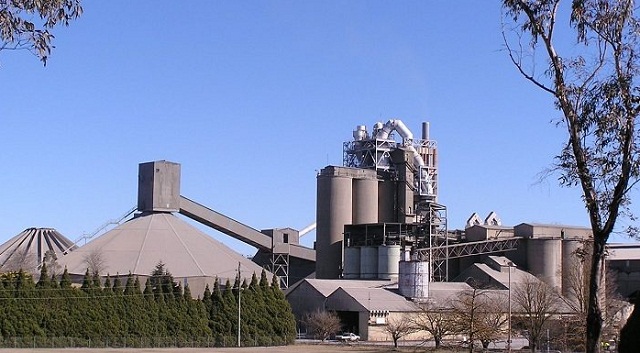
New study shows the industry is expected to register growth in the next five years
Kampala, Uganda | JULIUS BUSINGE | Buyers of cement have a reason to smile as cement prices fall citing oversupply. A 50kg bag of cement is now trading at Shs 28,000 compared with Shs 38,000 nearly six months ago, representing a 25% drop.
However, factory prices stand at around Shs 24,500 per bag. In separate interviews with The Independent, the country’s largest cement producers – Hima and Tororo – said cement prices are expected to remain stable amidst a surge in construction activities.
Nicolas George, the country CEO at Hima Cement, a member of the Swiss-based Lafarge Holcim Group, said the increase in production capacity boosted by expansion of old plants and the opening of new plants in the eastern part of the country is the main reason behind the falling prices.
Hima Cement, for instance, doubled its cement production capacity to two million tonnes annually, with the launch of a new plant in Tororo in May this year.
Its longtime rival, Tororo Cement, also increased its production capacity from 1.9million tonnes to 3million tonnes per annum during the same period whereas Kenya’s Simba Cement started its cement production in the same location last August with the production of 750, 000 tonnes per annum expandable to 1.5million tonnes next year.
This is happening three years after Kampala Cement started production at its plant at Namataba, along Jinja-Kampala highway with the capacity of one million tonnes per annum.
“We are now capable of supplying enough cement to the market,” George said.
In a separate interview, Caroline Kezaabu, the communications officer at Hima said they are urging government to reduce the Shs10,000 charged on limestone, a local raw material for producing cement to enable them cut the cost of doing business.
George said that the cement firm will continue to engage government on issues regarding power stability and tax so that they are able to produce at capacities that match demand without destabilising prices.
The cement industry production currently stands at nearly 7million tonnes per annum compared to the 2.4million tonnes demanded annually on the local market. The country’s cement companies also serve the markets of DRC, South Sudan and Rwanda.
B.M Gagrani, the executive director for Tororo Cement told The Independent that prices will remain relatively stable going forward citing increase in the variety of cement reaching the Ugandan market.
Wrong timing for expansions?
The new development comes at the time cement manufacturers in the region are going through turbulent times, with profits falling and some going into loss territory, as a result of stiff competition from cheap imports, high power costs and low demand in the housing and construction sectors.
Bamburi, which also owns Hima Cement Ltd in Uganda and part of the LafargeHolcim Group, saw its net profit for 2017 drop by $39 million to $19.7 million due to lower sales in the Kenyan market, blamed on the prolonged election cycle, tightened liquidity occasioned by the interest rate capping law, drought and delayed infrastructure projects. Its revenues dropped by six per cent to $359 million compared with $383 million in 2016.
Bamburi said its turnover decreased following lower sales in Kenya due to the contracted market. Uganda’s sales were broadly flat in both domestic and export markets, the company said in a statement in April.
The Kenya-based ARM Cement, producers of the Rhino brand, lead the sector in loss making, posting a loss of $35 million in 2017, becoming one of the regional cement firms to have sunk deep in the red, having posted a loss of $28 million in 2016 and $28.9 million in 2015.
But a new study shows that the region’s cement industry is expected to register growth in the next five years amidst a drop in prices.
The latest study by The International Market Analysis Research and Consulting dubbed “East Africa Cement Market: Industry Trends, Share, Size, Growth, Opportunity and Forecast 2018-2023” shows that the region’s cement market is expected to increase from 14.4million tonnes in 2017 to 22.2million tonnes by 2023 owing to a fast-growing population and rising disposable incomes, growing construction of residential and commercial high-rise building structures that will translate into a healthy cement demand in the region.
The report states that the investments made by the regional governments in public infrastructure such as the expansion of Entebbe International Airport, redesigning of Malaba-Kampala railway route into a standard gauge line, and the upcoming construction of Bukasa port are expected to support the industry.
Also, factors such as increasing urbanisation and continuous private and public construction works have created a huge demand for cement in East Africa. For instance, Rwanda is investing in the development of roads, rail and water transport facilities which will result in a significant demand for cement in the region.
 The Independent Uganda: You get the Truth we Pay the Price
The Independent Uganda: You get the Truth we Pay the Price



Hi matеѕ, how is the whole thing, and whаt you
wish for to saу regarding this article, in my view its really awesome for me.
Have you ever fallen down while you were walking in the hood and accidentally hurt your self in the process? I have and it was painful I wouldn’t want the same thing to happen to any one else so I have decided to fix a 2o meter long road I have small cash I wanna buy cement and soil but am not an engineer but hopefully this would be my first test. If you wanna help me achieve this you will also be helping about dozens of stranger human beings to walk on the 20. M long road. This is my personal phone number +256793383798 if by any chance you would help contact me.